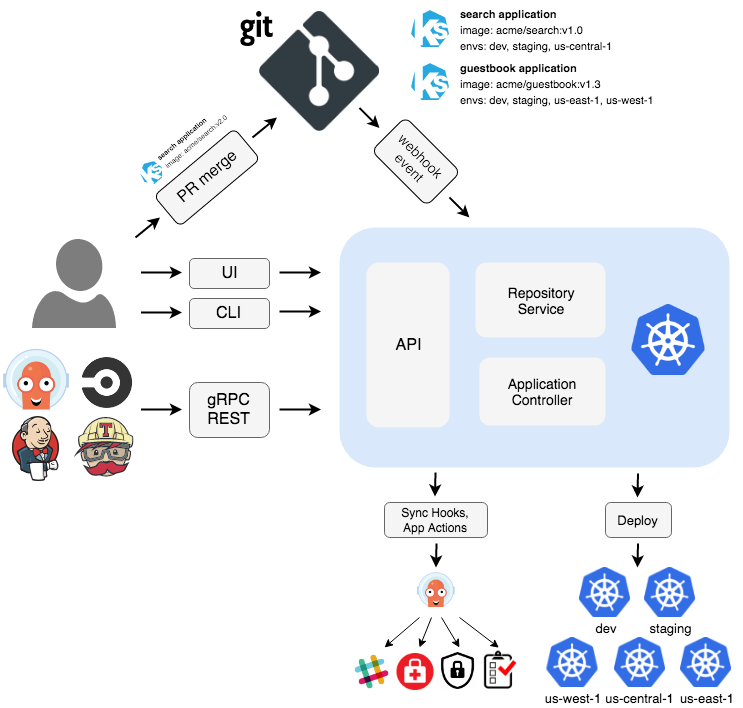Argocd
Argo CD is a declarative, GitOps continuous delivery tool for Kubernetes.
Why Argo CD?
Application definitions, configurations, and environments should be declarative and version controlled. Application deployment and lifecycle management should be automated, auditable, and easy to understand.
How it works
Argo CD follows the GitOps pattern of using Git repositories as the source of truth for defining the desired application state. Kubernetes manifests can be specified in several ways:
- kustomize applications
- helm charts
- jsonnet files
- Plain directory of YAML/json manifests
- Any custom config management tool configured as a config management plugin
Architecture
 ;
;Core Concepts
Let's assume you're familiar with core Git, Docker, Kubernetes, Continuous Delivery, and GitOps concepts. Below are some of the concepts that are specific to Argo CD.
- Application A group of Kubernetes resources as defined by a manifest. This is a Custom Resource Definition (CRD).
- Application source type Which Tool is used to build the application.
- Target state The desired state of an application, as represented by files in a Git repository.
- Live state The live state of that application. What pods etc are deployed.
- Sync status Whether or not the live state matches the target state. Is the deployed application the same as Git says it should be?
- Sync The process of making an application move to its target state. E.g. by applying changes to a Kubernetes cluster.
- Sync operation status Whether or not a sync succeeded.
- Refresh Compare the latest code in Git with the live state. Figure out what is different.
- Health The health of the application, is it running correctly? Can it serve requests?
- Tool A tool to create manifests from a directory of files. E.g. Kustomize. See Application Source Type.
- Configuration management tool See Tool.
- Configuration management plugin A custom tool.
Further info
For more infos on core docker/helm/container features read the docs understand the basics